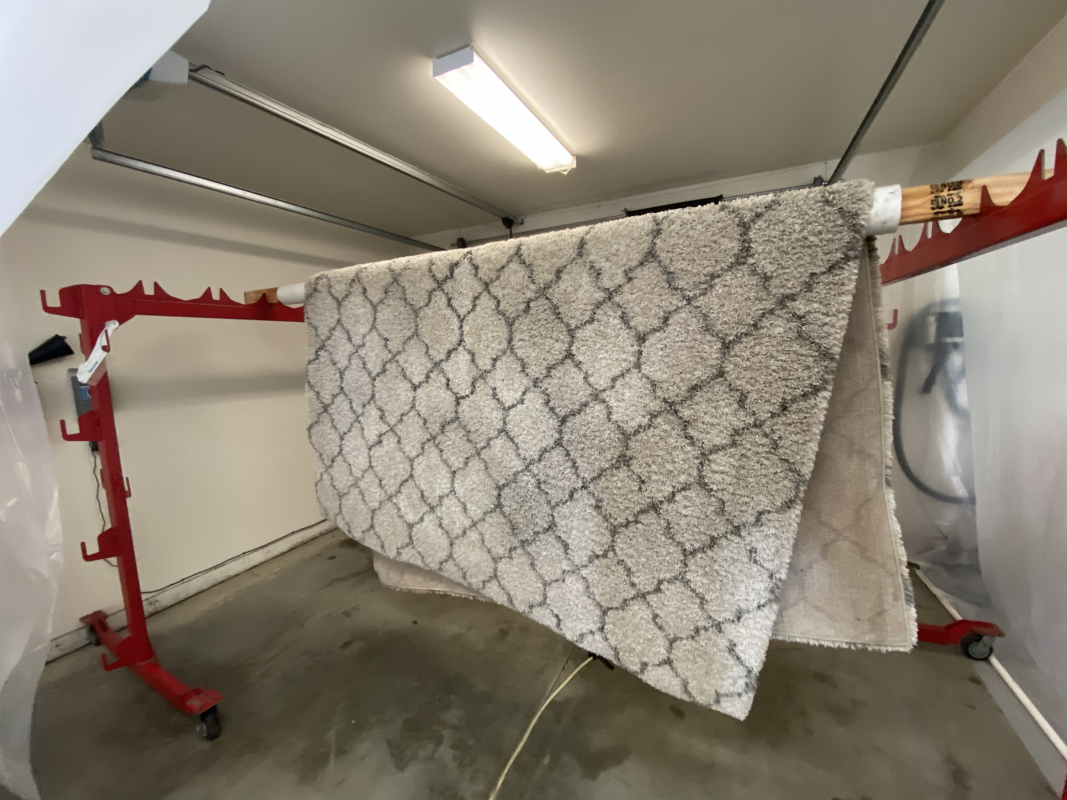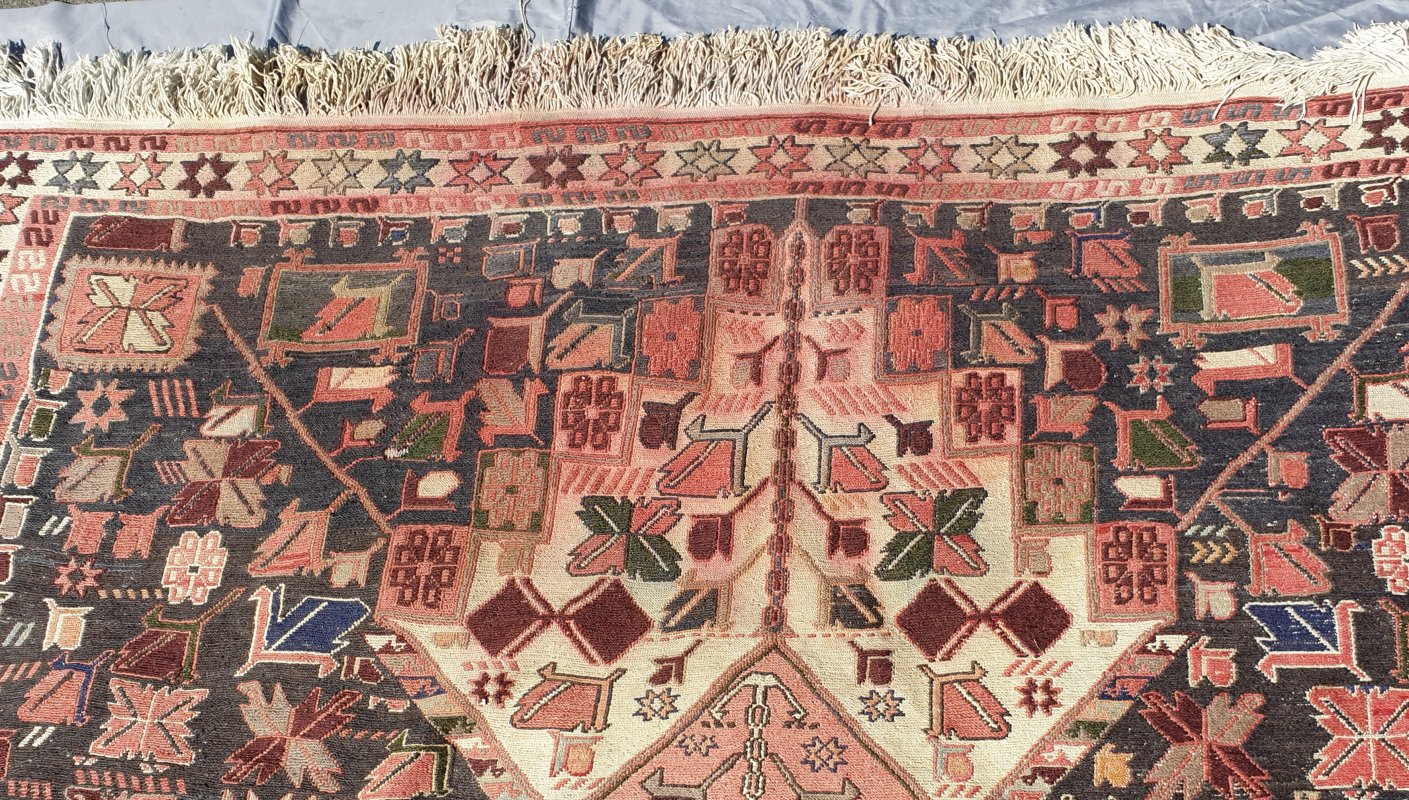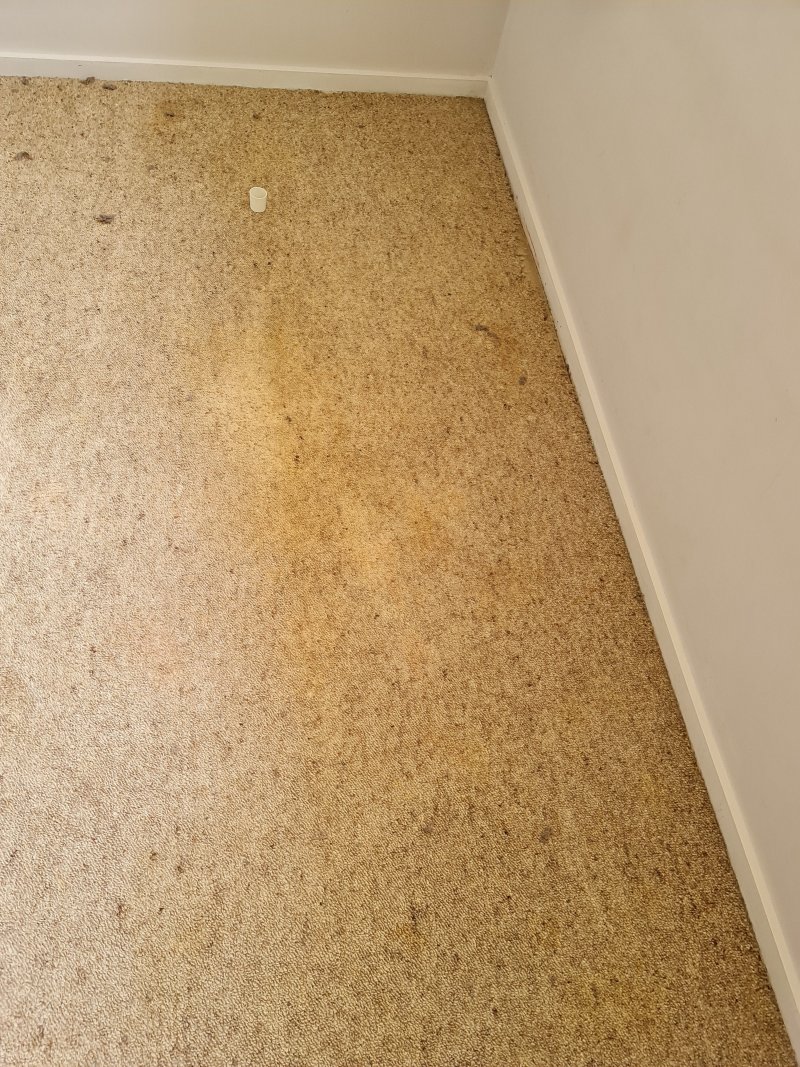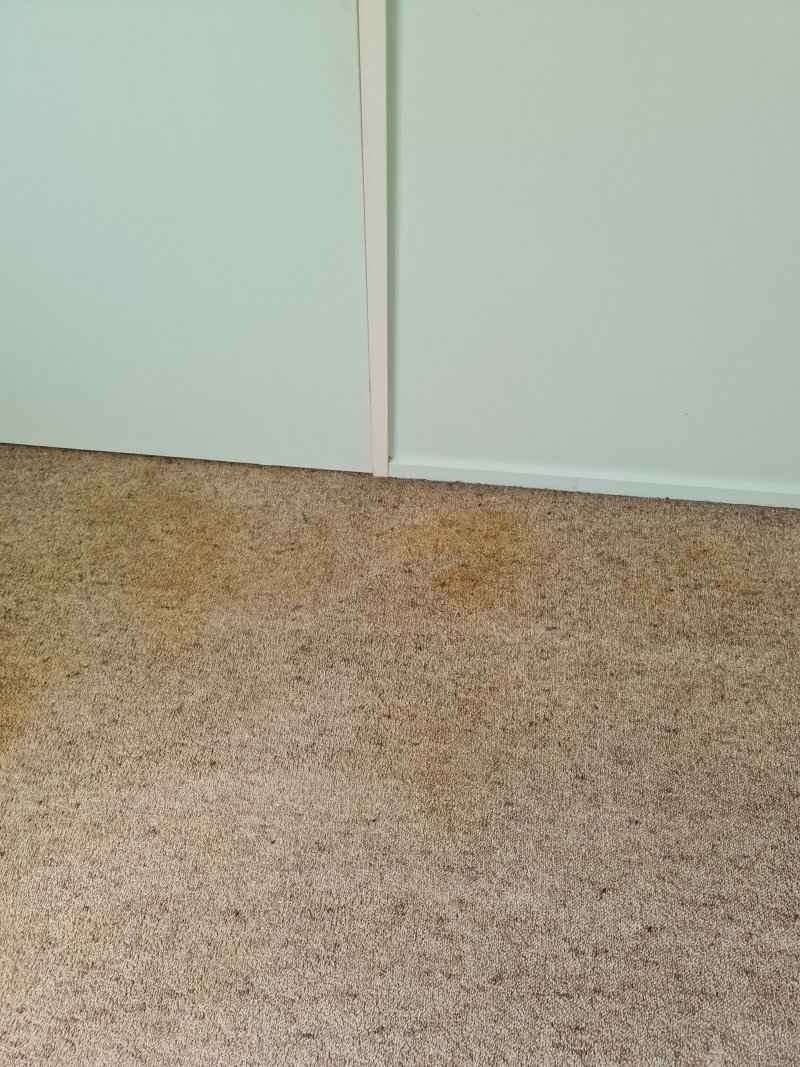I'll let the
IICRC provide their own images for some of these..
Shrinkage:
Natural fiber area rugs may noticeably shrink or buckle after cleaning if certain materials used in the rug’s construction do not shrink uniformly. Some rugs are more prone than others to shrinkage and some rugs may shrink uniformly so you’ll most likely never notice. Cleaning method caution should be used to try to minimize over wetting, with a “Low Moisture” process being preferred, but some shrinkage may not be avoidable.
If cleaning your rug in your home is not worth the risk, ask your
IICRC certified cleaner if they offer “In Plant” cleaning or can refer to a company that does.
Edge Curl:
The sides of hand made rugs can curl because of excessive weft tension in the structure or lack of dimensional stability during the cleaning process. This is a weaving defect and can also happen from humidity in the house. Rugs that are prone to this should be cleaned in a controlled setting at a rug washing facility.
This condition is also very likely to happen with synthetic machine made rugs with cotton cord binding . On average, about 50% of the time the curling or ripples should be reduced or completely gone when the rug is dry.
If your synthetic rug did not dry flat, be patient, most take a few days to flatten out. If not you can try these tricks to help.
-Roll the rug up, starting face down, as tight as you can and hold it secure with rope or tape for a few days
-Use a clothes steamer (not an iron, too hot and can melt synthetic fibers real quick) to relax the edges and place a large heavy object on the raised areas for 24 hours. Make sure the object won't damage the rug by bleeding or rusting by using a plastic garbage bag as a barrier
On-location Cleaning:
It is recommended by the
IICRC S100 Standard that the preferred system to clean area rugs is to remove them from a customer's house or business to be cleaned. It is understood that sometimes conditions dictate cleaning a rug on-location (size, price of cleaning vs value of the rug, customer not wanting rug to leave) and can be performed with caution. This should only be done by a specially trained technician using the proper method. Special attention to possible damage to the rug or floor needs to be followed and quick drying methods should be performed.
Care Tips:
-Rotate your rug once or twice a year to prevent uneven wear and fading.
-Flip your rug upside down and use a full size upright vacuum cleaner with a beater bar/brush roll to vibrate dry soil out of the fibers. Spend a good amount of time going over the rug from many directions. Be prepared to sweep or vacuum up what could be a considerable amount of dust if you live in a dry area or have pets.
Fringe:
The ends of many rugs may be finished with cotton, synthetic or even silk fringe. This is part of the foundation of a hand-knotted rug and can be machine woven or sewn on to other rugs. Fringe is vulnerable to traffic wear, pet damage and aggressive vacuuming, and may have been weakened by bleach treatments in the manufacturing process or by improper cleaning. Always gently tug on a fringe to see if it comes off easily. If so, much of that fringe may be removed even with gentle cleaning.
It may be possible to touch up the fringe by hand when cleaning the rug in the home, please consult with your
IICRC certified cleaning technician about your options
Tufted Rug Off Gassing:
Hand-tufted rugs are held together using a latex adhesive. Many rugs will have an odor from day one and others will develop an odor over time due to impurities in the latex used. This is a manufacturing flaw and can’t be corrected by cleaning.
If the rug is new,the consumer should contact the retailer and ask to return the it
Tip: Tufted rugs usually have a five to ten year life span before the latex glue start to dry out and the rug starts to fail
When buying rugs, inspect the back and look for a visible reverse pattern of the front , this indicates no glue is being used to hold the rug together, thus ensuring a long lasting rug. This is true for both natural and synthetic fibers.
Browning;
Cellulosic browning occurs when plant-based rug fibers dry slowly. Sugars or Lignin in the plant fiber’s (Jute or Cotton) cells rise to the surface and leave a yellow to brown discoloration. The process is similar to an apple slice or wilted salad greens turning brown, and is easily corrected with the proper cleaning methods. Sometimes confused with soil wicking.
Rug types that are prone to Browning should be cleaned in a Rug Washing facility as controlled or corrected when dry. Please consult with your
IICRC Rug Technician for assistance.
Color Bleeding:
Rug dyes may move (bleed) during the cleaning process due to long-term exposure to moisture, animal urine, and high pH or pH buffered cleaning products.
In addition, some rug fibers are overdyed or the dyes are poorly set during the initial dye process. Pre-existing dye-bleed is often more pronounced on the back of a rug and should be a warning of potential problems for the cleaner. Pre-testing suspicious colors and rapid drying is critical to avoid permanent rug damage.
Safe “Low Moisture” options are available for light soil situations, consult with your
IICRC Certified Cleaning Technician to see if they offer this service
Fabric Protector not Beading:
When “aftermarket” fiber protection products are applied to carpet and fabric, there can be an over abundance of the protective polymer sitting on top of the textile. This extra layer will break down over time but the individual fibers will still be coated/protected. Do not be alarmed if beads of liquid no longer sit on the surface of your carpet or upholstery fabric, your textile is still very resistant to permanent staining, soil and spots
Vacuuming, foot traffic and deep cleaning all have their effect on the initial break in on the fabric protection and over time will be the cause for the need to re-apply the protection, especially in high traffic areas.







